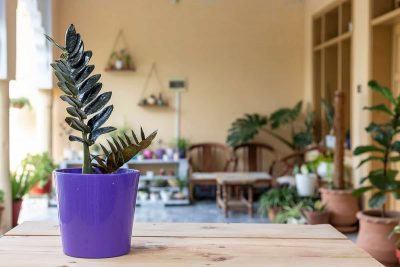Propagating houseplants is an affordable and simple way to increase the number of plants in your home. By creating new plants through both sexual and asexual means, you can experience the joy of plant parenthood without breaking the bank Propagating Houseplants – Penn State Extension. Many houseplants are easy to propagate, allowing even beginners to expand their indoor garden with minimal effort.
Pruning your jade plant can promote new growth and improve its overall appearance. But before diving in with clippers, you should familiarize yourself with the proper techniques to avoid causing damage. This article will guide you through the process, ensuring your jade plant thrives with the right amount of trimming.
White mold on your houseplant soil can be an alarming sight, especially when you’ve been carefully tending to your beloved plants. This common issue, though unsightly, is not always harmful to your plants and is usually manageable. In this article, we’ll discuss the causes of white mold and offer practical solutions to fix and prevent it.
Houseplants add beauty and purify the air in your living space, but it can be disheartening to see their leaves turn yellow. Understanding the causes and learning how to fix these issues will help you keep your plants healthy and vibrant. In this article, we will discuss common reasons for yellowing leaves and effective solutions to address each problem.
Indoor plants that don’t need fertilizer before a year offer a convenient option for those seeking low-maintenance greenery. You might think all plants require regular feeding, but many thrive with minimal intervention. These hardy species come adapted to less fertile conditions, where slow growth is the norm. Choosing such plants can simplify your gardening routine and still bring the lush beauty of foliage into your home.
Succulents offer a fascinating world of plants that you can explore. These plants are known for their ability to store water in thick leaves or stems. They thrive in various environments, from desert to domestic spaces, making them versatile and interesting for gardeners or plant enthusiasts.
As a Christmas cactus owner, understanding the unique needs of your plant helps ensure a beautiful, long-lasting bloom. Christmas cacti are known for their colorful flowers, making them a sought-after holiday houseplant. This guide will cover the essential tips every Christmas Cactus owner needs to ensure their plant thrives and lights up their space every holiday season.
In this article, we dive into the world of plants that do more than just brighten up your home—they envelop it in delightful scents, making every room a more inviting and relaxing space.Jasmine
This article dives into the world of quick growers that promise to fill your home with lush foliage and instant gratification, perfect for both the impatient gardener and those looking to make a big impact fast.
In this article, we’ll introduce you to 15 black houseplants that are sure to make a bold statement in your living space, blending perfectly with any style or palette
Ever returned from a trip to find your houseplants struggling for life? Enter the cactus, a champion of the drought-tolerant plant world, thriving on your forgetfulness and infrequent watering. This article introduces you to more such resilient houseplants, perfect for those who love greenery but might not have the time or memory for regular watering schedules.
Walking into a room filled with lush, vibrant Philodendron plants can instantly lift your mood and transform the space. Among the vast family of Philodendrons, varieties like the heart-leaf Philodendron (Philodendron hederaceum) bring a touch of the jungle indoors with minimal fuss. These adaptable houseplants thrive in indoor environments, making them perfect for adding a splash of green to your home or office.











